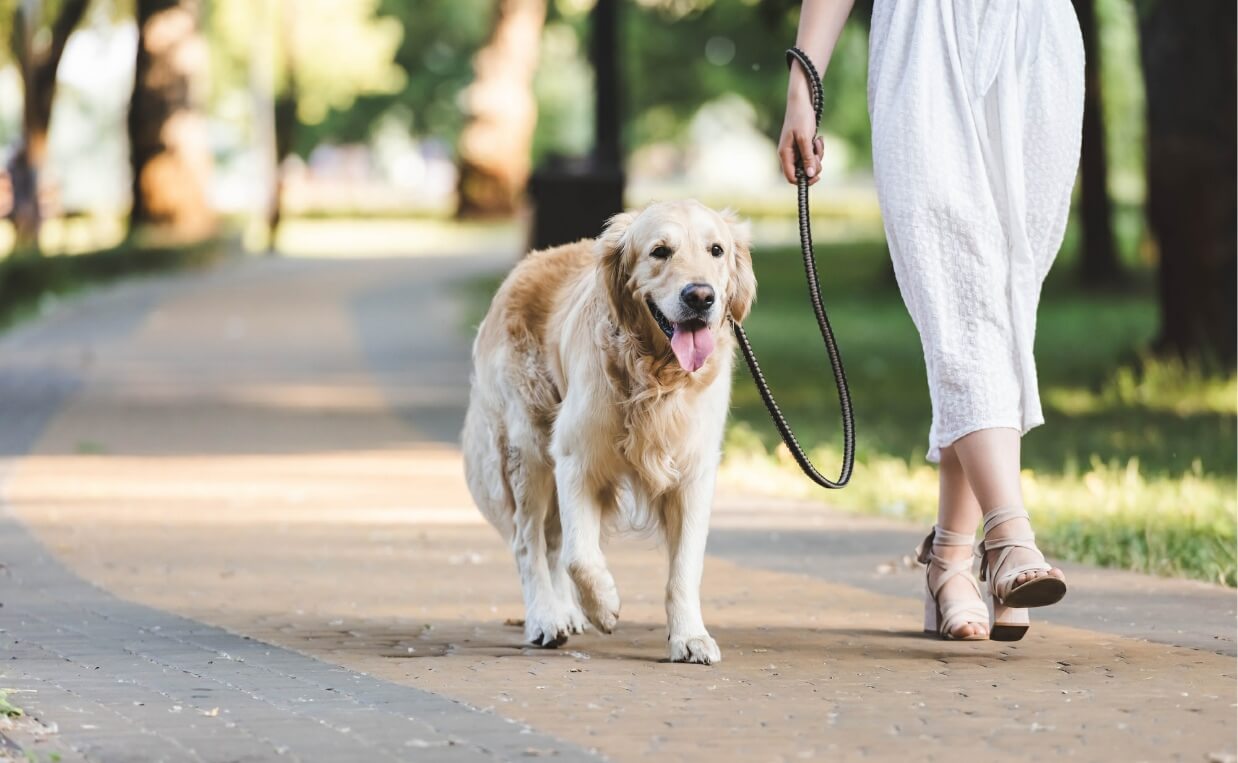
Pulling on the leash. Along with tail teasing squirrels and frigid strong winds, pulling on the leash can definitely make your walk with your dog less enjoyable. In reality, you’re not alone. Lots of people who walk their dogs struggle with their dog pulling too hard on their leash.
You’re not doomed to be pulled down the sidewalk forever; you can enjoy walking your dog. Here are some practical tips to help teach your dog to stop pulling on the leash.
-
Start with the right collar
Make sure your dog isn’t choking on their collar. The last thing you want is your dog pulling on the leash so hard they’re choking themselves. This usually happens because the collar isn’t fitted properly. Typically, the collar is too loose.
Here’s how to fix a collar that’s too loose. If the collar is sitting down your dog’s neck too far and your dog leans into the leash, your dog can really pull because the leash is low on your dog’s shoulders. This gives your dog more power.
Some people switch from a collar to a harness, thinking that will solve the problem. But switching to a harness doesn’t really address the issue that your dog is pulling on the leash. In fact, it actually makes it easier for your dog to pull.
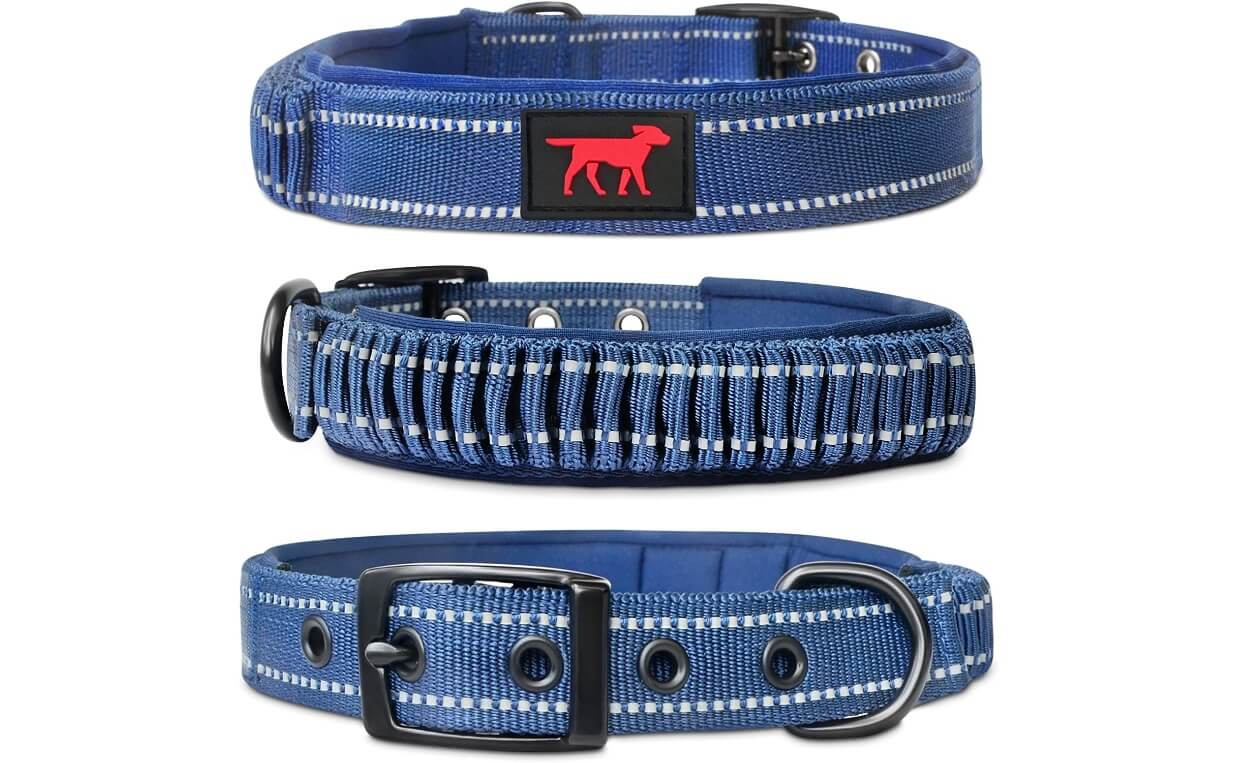
There are a lot of collars on the market, but there’s a certain best type for getting started. Look for a flat buckle collar. Just make sure you stay away from the plastic ones as they can break at the clip.
Buckle the collar so it sits high on your dog’s neck. You don’t want it to slide down. Now, adjust the size so you can only fit two fingers underneath the collar. You don’t want it too tight, but you don’t want it too loose either.
One thing to remember is if you have a growing puppy you need to do the two-finger collar check every day.
Having a well-fitted collar will give you more control and provide your dog with better timing and information.
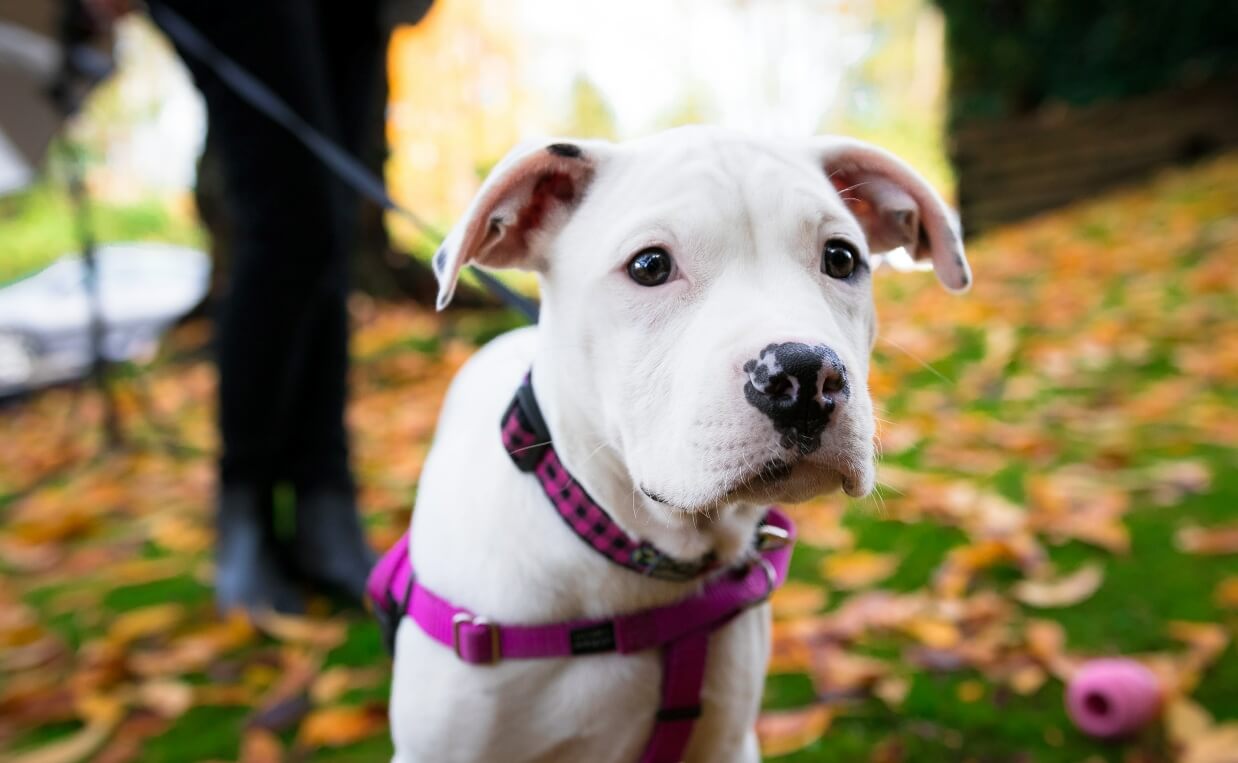
-
Choose the right harness
The right kind of harness gives you extra leverage so your dog can’t lean in with their full body weight to drag you along. The Freedom No-Pull Harness is a great option.
-
Choose the right leash
Some people prefer a bungee style leash because it has a little bit of give, but for most dogs a 6 foot leather leash is a good choice. A 6 foot leash is long enough to provide freedom of movement while at the same time keep your dog close and under control. Avoid cloth or rubber leashes because they aren’t as strong or durable as a leather leash.
Read more: How to Pick Out the Ideal Leash for Your Dog
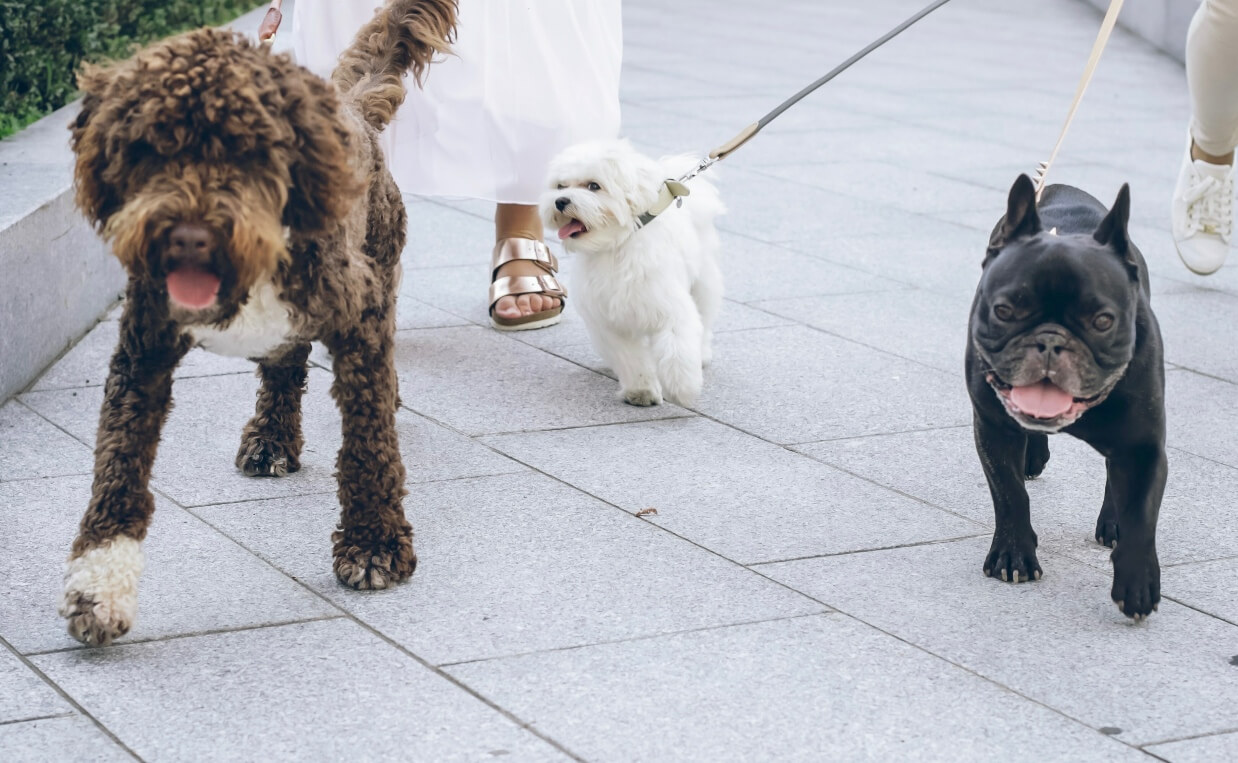
-
Tension on the leash
The goal is to gain a slack leash with the clip pointing towards the ground. This is important because if your dog is always under tension and you’re holding the leash tight, your dog can feel it and will become accustomed to the pressure. What ends up happening is they pull all the time because they are familiar with the tight tension. So try to get the leash loose when you’re training your dog. The goal is for your dog to learn to move toward you when he or she feels tension on the leash.
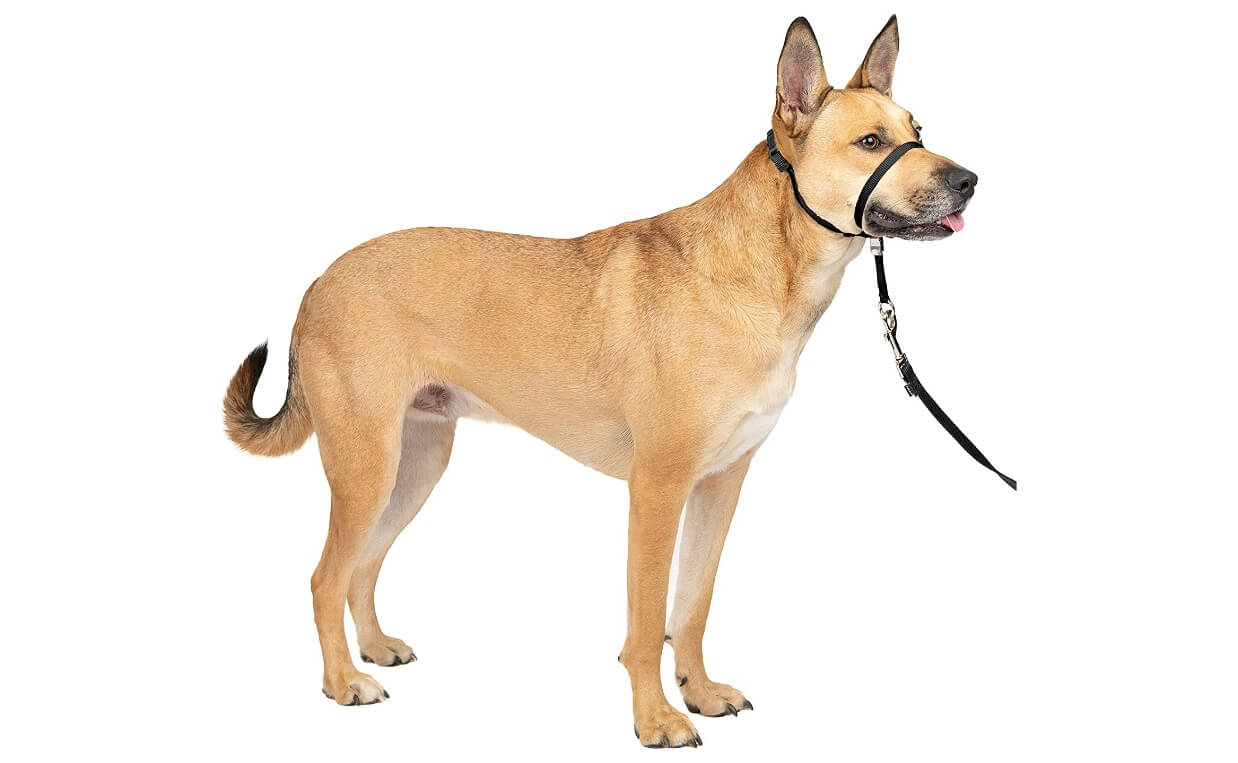
-
Consider a Gentle Leader
If you have a very strong dog, you might need something to help provide your dog with stronger direction to help affect change in your dog. The next go-to piece of equipment is a Gentle Leader, often recommended by veterinarians. The reason so many veterinarians recommend the Gentle Leader is it works on head control. It controls the movement of the head better than the flat buckle collar alone and it works on a pressure system instead of a pain system like some other collars. Just make sure you are still giving your dog good timing and information in order for the Gentle Leader to be effective.
A benefit of the Gentle Leader is that it’s easy to wean your dog off it. If your dog is walking with you and doing a good job not pulling on the leash, you can slide the nose loop off. You can then clip the nose loop into the double D-ring underneath the Gentle Leader and it will act like a flat buckle collar.
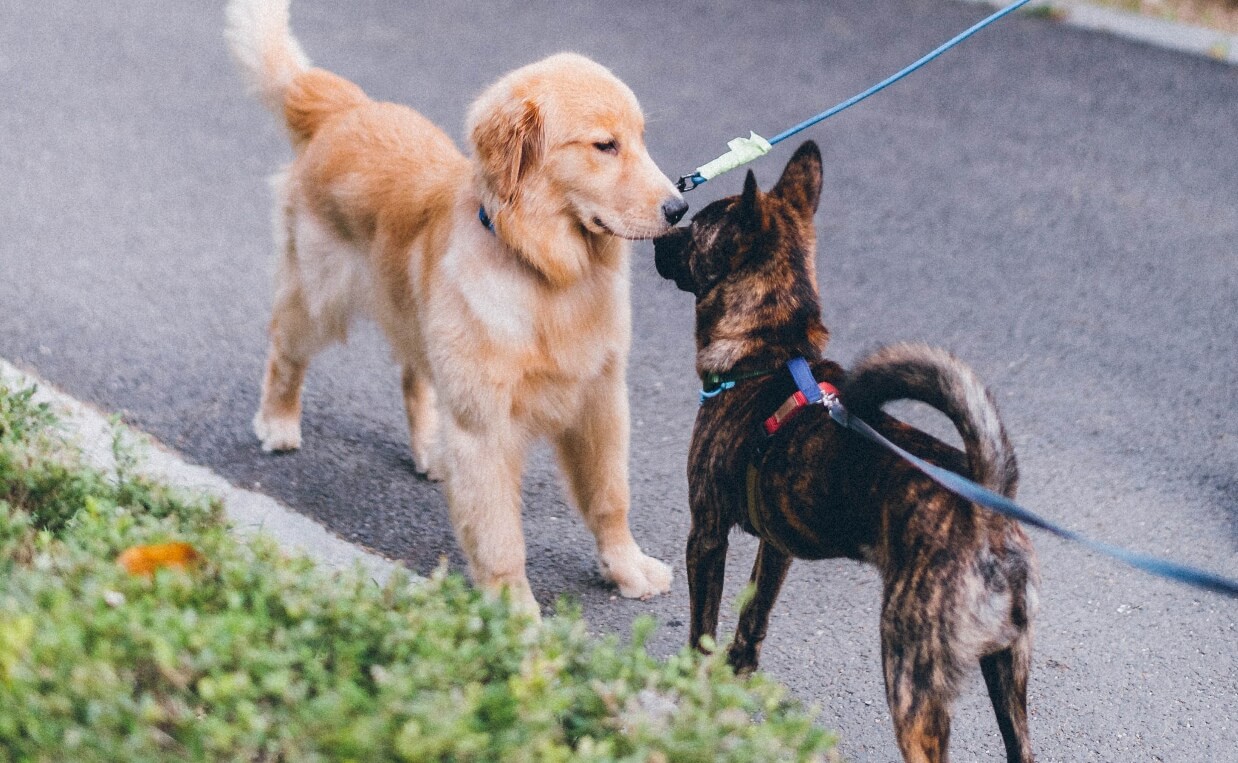
-
Managing distractions
Don’t let your dog pull to get to the things he or she wants. How you do this is to turn your dog the opposite way from distractions. There are lots of ways to do this, but one way is to turn your dog around and put slack in your leash. This is important because if your dog is constantly on a tight leash, he or she is going to learn to continue to pull.
You want to work around distractions, but make sure the distractions aren’t too close during the learning phase. You can then work up to closer and closer distractions.
-
Make sure you’re consistent
Consistency is essential when teaching your dog to walk without pulling on the leash. If you’re not consistent – if you let him or her pull some of the time and other times you address it – you’re not really being clear and consistent. And that’s not fair to your dog.
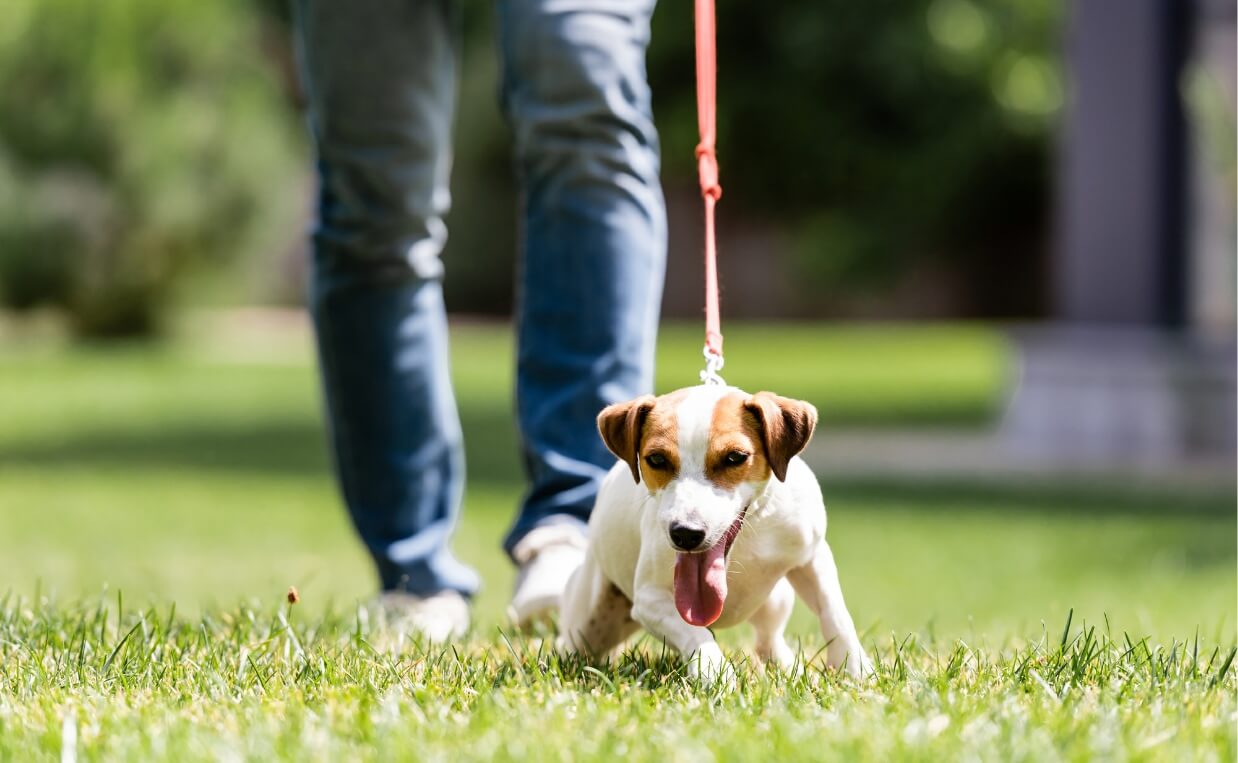
Final Thoughts
Training your dog to walk with a loose leash requires patience – sometimes lots of it! But hang in there – it’s worth the effort! Whether your dog is pulling on the leash or not, be unpredictable and reinforce preferred behavior. Making quick turns, reversing direction, speeding up and slowing down all make your walks more interesting, which means your dog is more likely to follow you because it’s fun! And if you feel like your neighbors will be amused, just chalk it up to being a good citizen in your community!
Just starting out teaching your puppy to walk on a leash? Check out this blog post: 10 Tips to Train Your Dog to Walk on a Leash
Have you taught your dog to stop pulling on the leash? If so, how did you teach him or her? Please share in the comments below…

 [FREE DOWNLOAD] Do All of Those Daycare Dogs Get Along?
[FREE DOWNLOAD] Do All of Those Daycare Dogs Get Along? International Assistance Dog Week: How To Interact With A Service Dog
International Assistance Dog Week: How To Interact With A Service Dog Teach Your Dog to Put Their Toys Away: A Fun and Practical Guide
Teach Your Dog to Put Their Toys Away: A Fun and Practical Guide 10 Tips to Stop Dog Aggression Towards Cats
10 Tips to Stop Dog Aggression Towards Cats How to Curb Unwanted Chewing in Puppies
How to Curb Unwanted Chewing in Puppies






Leave a Reply